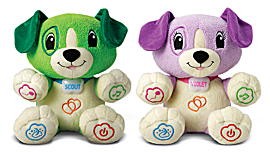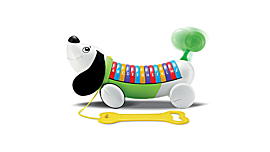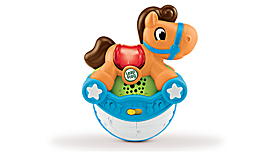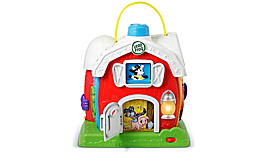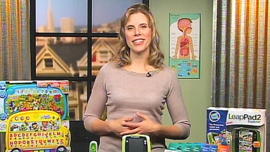Best toys for 1-year-olds
Our learning experts explain how to choose the best educational toys for your new toddler.
Now that they can crawl, cruise or walk, 1-year-olds are curious to explore their surroundings in ways that weren’t possible before. While they’re not yet ready to dive into the academics of ABC’s and 123’s, the best toys for 1 year olds can foster their curiosity, encourage them to explore with their senses, and provide them with opportunities to experiment with cause and effect relationships.
With all that a child can learn and do at this age, it’s tempting to look for toys that claim to do just about everything. Keep in mind that toddlers appreciate repetition and can get overwhelmed easily. Choose the toys that focus on few key learning goals that are developmentally appropriate for them. The best toy box contains a variety of toys so toddlers choose the toy that appeals to them at the moment. Giving them the chance to choose for themselves is also good for building their confidence.
Shopping guide: Best learning toys for 1 year olds
- Active play toys: This is a stage of dramatic physical development. Activity tables, rolling toys and push toys are excellent for engaging a child’s gross motor skills, including balancing, standing, cruising and walking. Busy boxes and toys with lots of buttons, latches, slides and so on are great for promoting fine motor skills requiring finger dexterity and hand-eye coordination.
- Sensory play toys: Toddlers are learning to experience their world through their senses, taking in all the information they can get from their fingers, mouth, ears and eyes. Offer educational toys that stimulate their senses with different textures and materials (plastic, wood, cloth). Brightly lit and boldly colored toys can be appealing for everyday play, while softly lit toys with simple melodies (even repetitive ones) can help your child calm down and focus. Variety is the key at this age.
- Open-ended toys: Everything is new and interesting to a 1-year-old. Imagine what it must be like to discover the world for the very first time! Within reason, allow children to experiment and play with toys in a variety of ways. If a child is dropping or bouncing a doll instead of playing house properly, she might be experimenting and learning about some very fundamental ideas about physics! On that note, simple toys such as plush balls, simple plastic cups, toy boxes or toy cookware that have lids to open and close are great as they allow for multiple ways to play.










